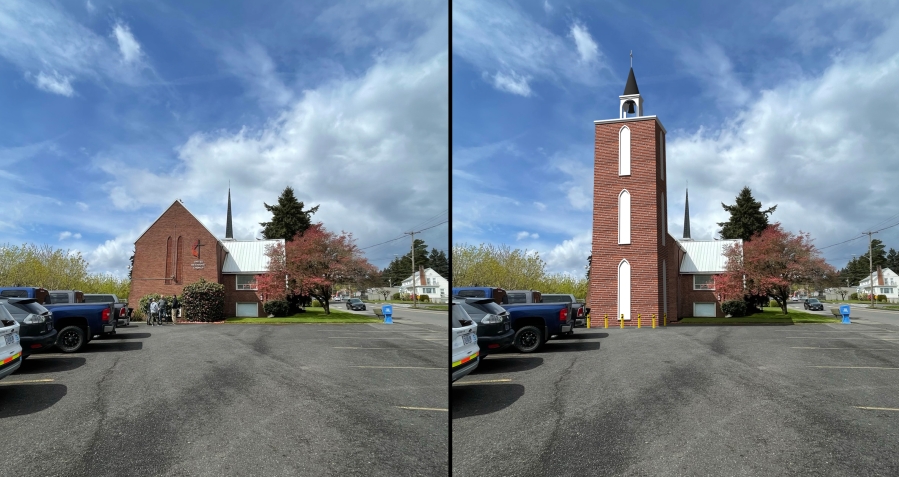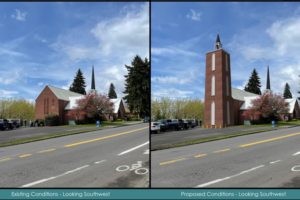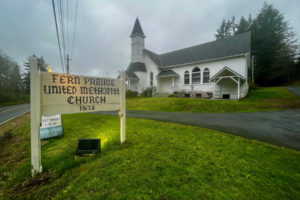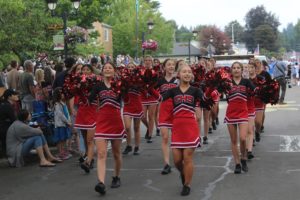Camas Hearings Examiner Joe Turner has approved a conditional-use permit to construct an AT&T “stealth-designed” cellular tower at the Camas Methodist Church near downtown Camas.
The future cell tower will be disguised inside an 88-foot bell tower with a church spire and cross on the side of the church, and will replace the existing communications facility on the nearby Garver Theater rooftop at 1612 N.E. Garfield St., in Camas.
The Garver Theater cellular lease expires Nov. 1, 2028, and AT&T has been seeking a replacement site that would give the same coverage and easily “hand off” the cellular signal to nearby towers.
At a public hearing held Feb. 15, Turner heard testimony from city of Camas staff, the applicant and community members who supported or opposed the conditional-use permit.
Sharon Gretch, with Smartlink Group, LLC, spoke on behalf of AT&T Wireless.
“The existing site we have on Garver Theater is going to be decommissioned. The use will be terminated soon,” Gretch said. “So, we were trying to get a headstart on that.”




